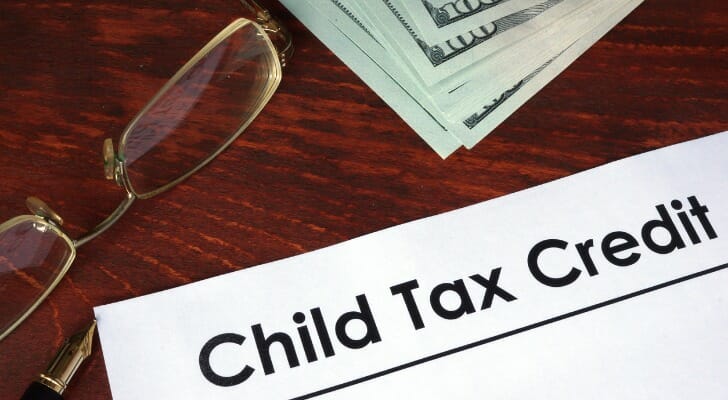Claiming one or more dependents on your taxes can yield some valuable tax benefits, including the ability to claim the child tax credit and the child and dependent care tax credit. But when parents share 50/50 custody, determining who claims a child on taxes depends on IRS rules and agreements between the parents. Typically, the custodial parent – the one with whom the child resides for more nights in the tax year – has the right to claim the child as a dependent. If both parents attempt to claim the child, the IRS applies tiebreaker rules based on residency and income. However, parents may choose to take turns claiming the child each year or complete IRS Form 8332 to grant the noncustodial parent the right to claim the dependent.
Tax planning should be coordinated with financial and estate planning, and that’s where a financial advisor can offer valuable insight and guidance.
Who Can Claim a Child as a Dependent?
To claim any child as a dependent, the child has to meet the qualifying child test or the qualifying relative test established by the IRS. To meet the qualifying child test, the child must be younger than you and under 19 years old or a student younger than 24 years old at the end of the calendar year. The IRS doesn’t impose an age limit for children who are permanently and totally disabled or meet the qualifying relative test.
A qualifying relative is someone who is not a qualifying child, is a U.S. citizen and lived with you for the entire year. Qualifying relatives must also be within income thresholds and you must have provided more than half of their total support for the year.
Only one taxpayer can claim the same child (or a qualifying relative) as a dependent on their taxes. This means parents who file separate returns have one of two options:
- Follow IRS tiebreaker rules for determining who gets to claim the child
- Mutually agree on who gets to claim the child as a dependent
Who Claims a Child on Taxes With 50/50 Custody?
Generally, IRS rules state that “a child is the qualifying child of the custodial parent and the custodial parent may claim the child as a dependent.” The custodial parent is the parent who has physical custody of the child for more nights during the year.
Understanding the Tiebreaker Rules
So how does this rule apply when parents have a 50/50 custody split? Again, parents can’t divide their claim to a dependent for tax purposes. Instead, the IRS applies a tiebreaker rule and gives the right to claim the dependent to the parent who has the child longer. So in a 365-day calendar year, this would be the parent who has the child for 183 days and nights. This rule applies whether the parents are unmarried, separated or divorced.
But what if the child spends exactly 182.5 days of the year with each parent? In that scenario, the IRS applies a second rule that gives precedence to the parent with the higher adjusted gross income (AGI). This means, however, that the parent who has the right to claim the child as a dependent in the eyes of the IRS could change from year to year.
Say that you and your child’s other parent have exactly equal custody. In 2024, your AGI was $5,000 higher than the child’s other parent. So you’d get to claim the child as a dependent. But let’s say that they get a promotion in 2025, which pushes their AGI up by $20,000. Under IRS tiebreaker rules, they’d be entitled to claim the child as a dependent, assuming your equal custody arrangement remains in place.
Parents Can Decide Who Will Claim a Child on Tax Returns

The IRS rules are in place to make tax filing for parents with 50/50 custody as fair as possible. But parents who share equal custody can decide among themselves who should get to claim their child as a dependent. For example, a common arrangement among parents with shared custody is to alternate years. So you might claim your child as a dependent in even tax years and the other parent claims the child in odd years. Or if you have an even number of children, you could agree to each claim half of them on your taxes. This type of arrangement can be written into a separation agreement or divorce decree.
You could also agree that the person who contributes more toward the child’s care financially should be able to claim them as a dependent. This might be the case if one parent pays for more or all of a child’s medical care or extracurricular activities. Again, it may be in your interest to put this type of agreement in writing.
Custodial parents can formally release their right to claim a child as a dependent by filling out Form 8332, Release/Revocation of Release of Claim to Exemption for Child by Custodial Parent. If a custodial parent completes this form, the noncustodial parent can claim the child as a dependent and as a qualifying child for the child tax credit. They cannot, however, claim the child in order to claim head of household filing status, the earned income credit or other child-related tax credits.
What Happens If Both Parents Claim the Same Child on Taxes?
It’s entirely possible that both parents will file their tax returns and claim the same child as a dependent. This can happen if one parent disagrees about who should have the right to do so and files their return without consulting the other parent.
When two people file returns independent of one another claiming the same dependent, the IRS will reject one or both of them. If you file electronically, this happens automatically. The IRS sends out a formal notice to parents who filed paper returns letting them know that their return has been flagged.
At this point, one parent will have to amend and resubmit their return to correct the error. If they fail to do so, the IRS can audit one or both parents’ returns. In that case, the tiebreaker rules are used to determine who actually has the right to claim the child to a dependent.
This kind of scenario is best avoided, as an IRS audit can be time-consuming, not to mention nerve-wracking. If you and your child’s other parent are not able to agree on who should claim the child as a dependent, you may want to talk to a divorce attorney, tax attorney and/or your financial advisor. They may be able to offer guidance on who would be entitled to the claim under IRS rules.
Bottom Line
Deciding who can claim a child on taxes with 50/50 custody can be tricky if you’re not aware of the IRS rules. While you can work out something with the other parent on claiming dependents, that’s not always a smooth process. The most important thing is to make sure you’re staying on the right side of the tax code to avoid an audit.
Tax Planning Tips
- Consider talking to a financial advisor about how to handle tax filing when you share 50/50 custody of a child. Finding a qualified financial advisor doesn’t have to be hard. SmartAsset’s free tool matches you with vetted financial advisors who serve your area, and you can have a free introductory call with your advisor matches to decide which one you feel is right for you. If you’re ready to find an advisor who can help you achieve your financial goals, get started now.
- Use SmartAsset’s Tax Return Calculator to see how your income, withholdings, deductions and credits impact your tax refund or balance due amount. This calculator is updated with rates and information for your 2021 taxes, which you’ll file in 2022.
Photo credit: ©iStock.com/designer491, ©iStock.com/Prostock-Studio, ©iStock.com/fizkes

